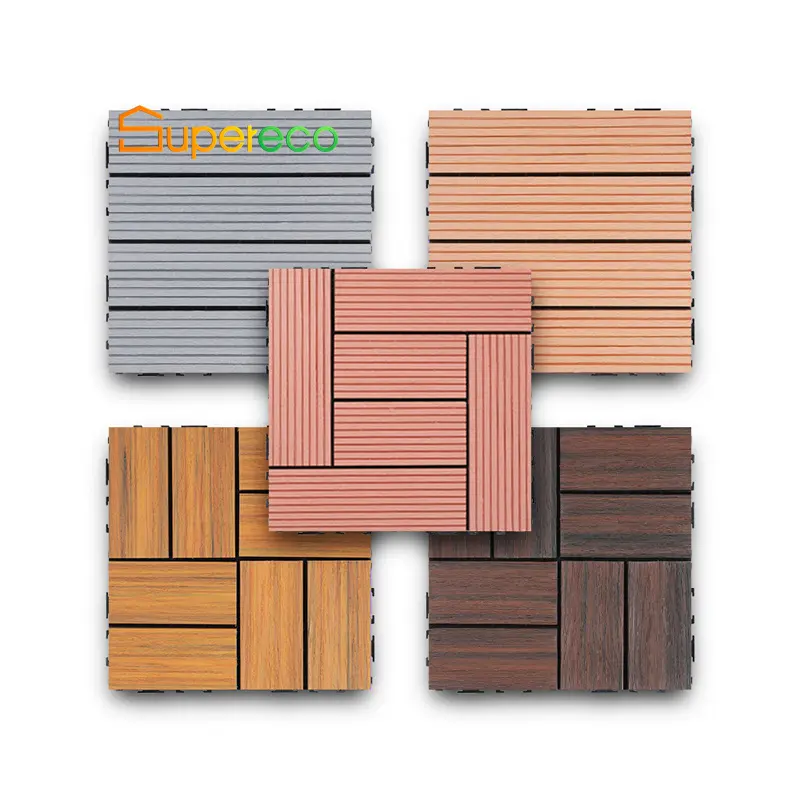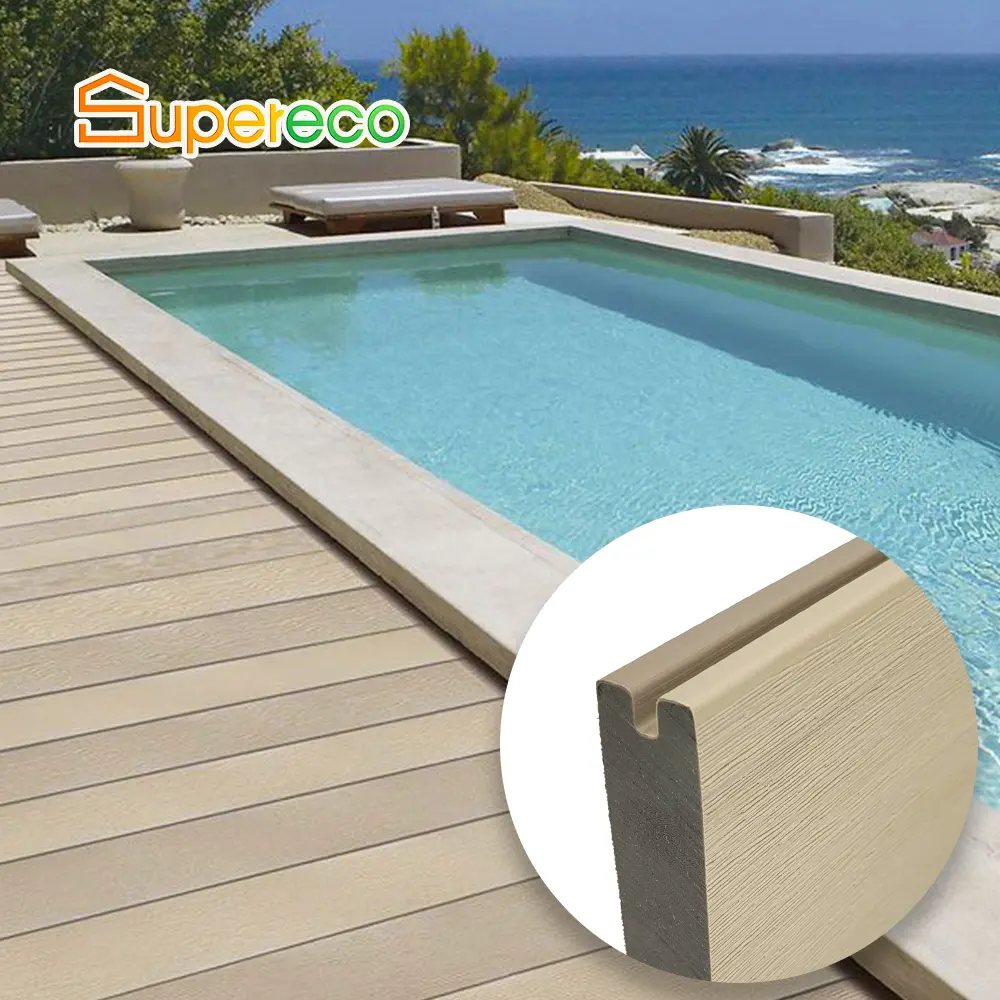What is the Key Features of Co-Extrusion WPC Decking?
WPC (Wood-Plastic Composite) decking tiles are a popular choice for creating durable and visually appealing outdoor spaces. While the tiles themselves provide a solid foundation, the finishing touches such as trimming and edging and regular cleaning and maintenance are essential for achieving a polished and long-lasting result. Below, we discuss the two key finishing touches that will elevate the appearance and functionality of your WPC DIT decking tiles. Trimming and Edging of WPC DIT Decking Tile Trimming and edging are crucial steps when installing WPC DIT (Do-It-Yourself) decking tiles, as they provide a clean and professional finish to the edges of your decking surface. Proper trimming not only enhances the aesthetic appeal but also ensures the longevity and safety of your deck. Key considerations for trimming and edging: Precise Cutting for Clean Edges: Use a fine-toothed saw or a jigsaw to trim the edges of WPC decking tiles accurately. This will prevent jagged cuts and ensure a neat, smooth finish. It’s essential to cut tiles to fit the exact shape and size of your deck area, especially if you have irregularly shaped spaces.Edging Strips for a Polished Look: WPC edging strips or trim pieces can be added around the perimeter of the deck to conceal the cut edges of the tiles and create a finished look. These strips also serve as a protective barrier, preventing the tiles from shifting or becoming damaged by outdoor elements.Flexible Edging for Curved Designs: If you’re installing WPC tiles around curves or rounded corners, consider using flexible edging that can be bent into the desired shape. This option provides a seamless look, ensuring that the deck maintains its visual appeal even in non-traditional layouts.Secure Installation: Make sure to use the correct fasteners and adhesives when attaching the edging to ensure that it remains securely in place. This step is important for both the structural integrity and appearance of the deck.With proper trimming and edging, your WPC DIT decking tiles will have a crisp, professional finish that enhances the overall design of your outdoor space. Cleaning and Maintenance of WPC DIT Decking Tile While WPC DIT decking tiles are low-maintenance compared to traditional wood, regular cleaning and maintenance are still necessary to keep them looking their best and to ensure their longevity. Here are some best practices for maintaining your WPC tiles: Regular Cleaning: Sweep the surface regularly to remove dirt, leaves, and debris that can accumulate on the tiles. For more thorough cleaning, use a mild soap solution and warm water, and scrub the surface with a soft-bristle brush. Avoid using harsh chemicals, as these may damage the surface or affect the color of the tiles.Pressure Washing: If your WPC decking tiles accumulate more stubborn dirt or grime, consider using a pressure washer with a gentle spray setting. Be cautious not to use too high a pressure, as this could cause damage to the surface of the tiles. A pressure washer can help remove deep-seated dirt without harsh scrubbing.Stain Removal: For stubborn stains, such as food or beverage spills, treat the area as soon as possible. Use a diluted bleach solution (1 part bleach to 3 parts water) to gently scrub the stained area, or use a WPC-specific cleaner that is designed to remove tough stains without damaging the tiles. Always follow manufacturer instructions when using any cleaning product.Avoiding Mold and Mildew: One of the benefits of WPC decking tiles is their resistance to mold and mildew, but it’s still essential to keep the surface dry and clean. Regularly clean any organic matter (leaves, plant debris) that may collect between the tiles, as this can promote mold growth. If you live in a particularly humid environment, it may be beneficial to use a mold-resistant cleaner periodically.Sealing the Surface: While WPC decking tiles are designed to resist weathering, sealing them once every couple of years can provide added protection against the elements. This is especially important for tiles exposed to heavy foot traffic or extreme weather conditions. Use a WPC-safe sealant that doesn’t affect the tile’s appearance.Inspecting for Damage: Regularly inspect your WPC tiles for signs of damage, such as cracks or loosened tiles. Replacing damaged tiles promptly will help maintain the integrity of the deck and prevent further issues from arising.By implementing a simple but effective cleaning and maintenance routine, you can preserve the appearance and durability of your WPC DIT decking tiles, ensuring that they continue to look great and perform well for many years. To achieve the best results with your WPC DIT decking tiles, paying attention to the finishing touches like trimming and edging and maintaining a regular cleaning and maintenance schedule is essential. Properly finished edges will enhance the look of your deck and help protect it from wear, while consistent cleaning and maintenance will keep your tiles in great condition, preventing damage and maintaining their aesthetic appeal. With minimal effort, these steps ensure that your WPC decking tiles will provide both style and function for years to come.


